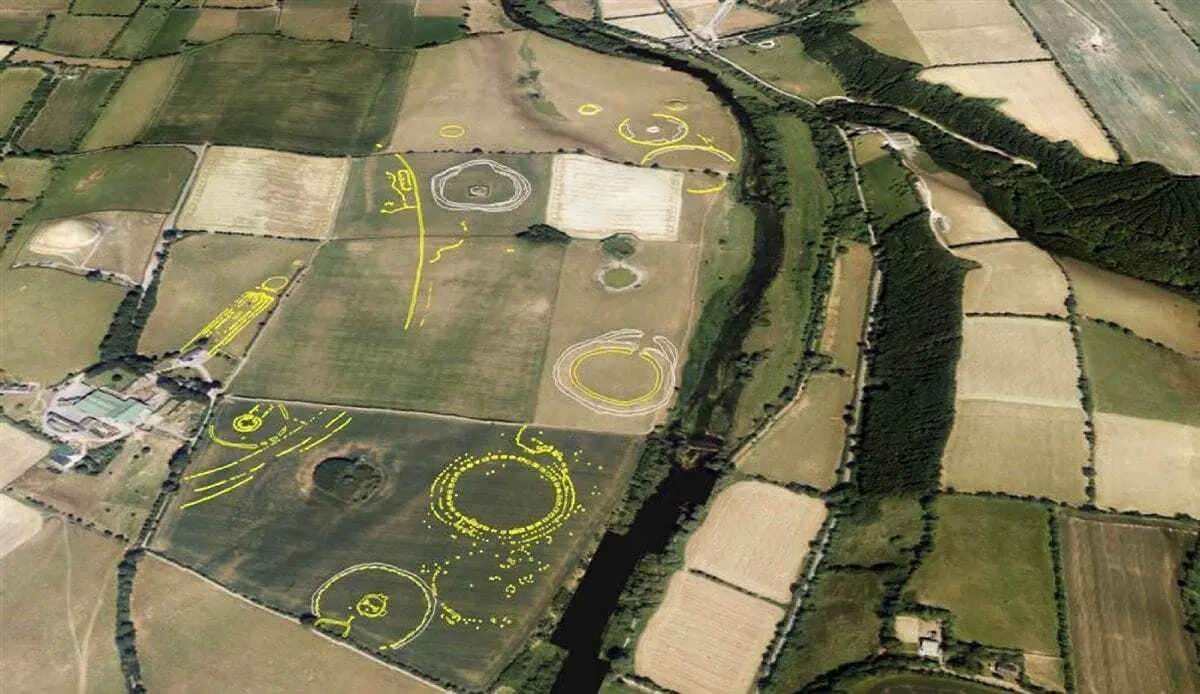The National Monuments Service in Ireland is using high resolution aerial photography from Bluesky to map and investigate a giant 4,500 year old Henge.
The circular structure, located the Brú na Bóinne UNESCO World Heritage Site, is evidence of prehistoric earthworks and was first observed by researchers with drones. Following the discovery, the National Monument Service of the Department of Culture, Heritage and Gaeltacht carried out extensive aerial reconnaissance including commissioning Bluesky Ireland to survey the cropmark enclosure at Newgrange.
“This new information is a graphic illustration of the extent and density of the ritual and ceremonial sites associated with the Newgrange Passage Tomb,” commented Joseph Madigan, T.D., Minister for Culture, Heritage and the Gaeltacht. “This stunning new archaeological data provides fresh, spectacular and unique insights into the origins and development of the Neolithic landscape and society.”
The summer of 2018 was unusually dry with near drought conditions during June and July, conditions which had already revealed crop marks of ancient castles and Iron Age forts in England and Wales. Researcher and photographer Anthony Murphy therefore decided to fly his drone over the Boyne Valley and located a large, circular crop mark in open farmland, indicating the presence of buried archaeological features.
Following the initial discovery the NMS used a Geographic Information Systems (GIS) to organise views of the landscape across maps, photographs and drawings of cropmarks identified to date. The location of the newly identified site was also visited to enable a better understanding of the topographical locations and the physical and visual relationships between sites.
NMS also availed itself of historic imagery and commissioned aerial mappings specialist Bluesky Ireland to capture the most up-to-date and detailed view of the landscape and discoveries. Bluesky also supplied 3D height measurements in the form of a 1 metre resolution Digital Terrain Model (DTM) which is being used alongside various layers of mapping including Ordnance Survey data.
A newly published report – The Archaeology of the Brú na Bóinne World Heritage Site Interim Report – details new information on the discoveries. Reinforcing the remarkable level of ceremonial and ritual use of the landscape during the prehistoric period up to 5,000 years ago, immense enclosures of timber uprights and large henges have been identified. These monuments, visible only fleetingly as cropmarks during the dry summer and recorded by Bluesky, clearly form a deliberately structured and ritual landscape of great significance.
Bluesky Ireland is a specialist in aerial survey using the very latest technology to capture and process aerial photography and LiDAR. Bluesky Ireland offers unrivalled speeds of capture coupled with high accuracy and quality, underpinned by more than 30 years’ experience in aerial surveying.
Having begun an ambitious national data capture programme in 2015, Bluesky Ireland has captured high-resolution aerial photography of a significant area of the country, with surveying expected to be completed in 2018. Bluesky Ireland is already working with many high profile organisations in the Irish geospatial market including the Department of Agriculture, Food and the Marine, the Department of Culture, Heritage and the Gaeltacht, the Geological Survey of Ireland and the state forestry company Coillte, as well as a host of local authorities.
Header Image Credit : BlueSky





